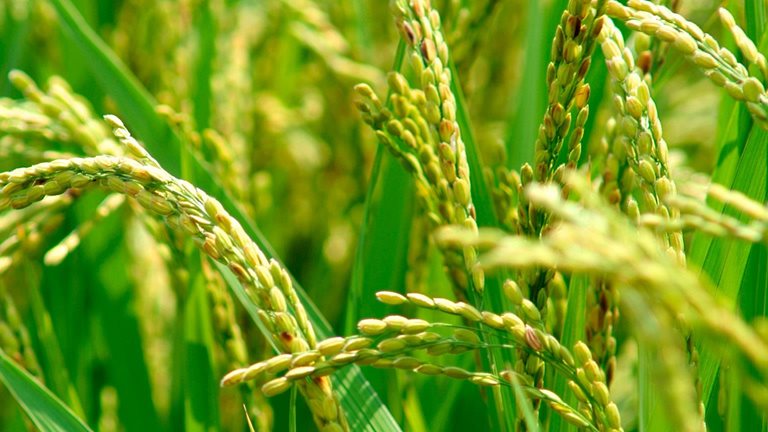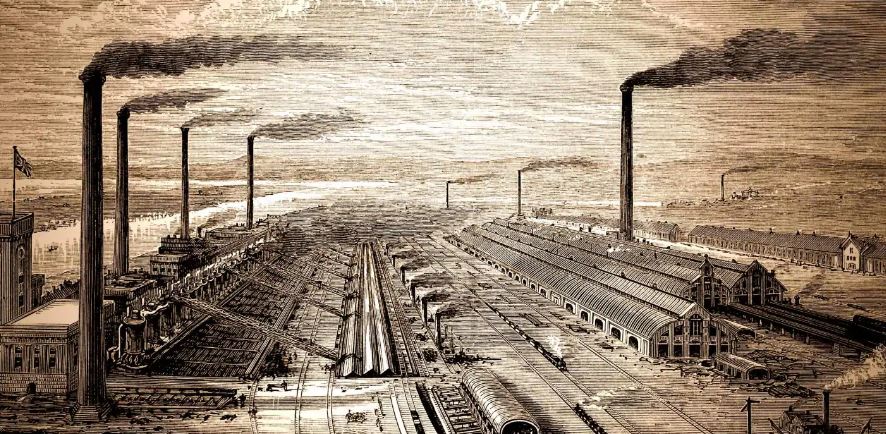Table of Contents
Blue revolution in India its features, objectives, outcomes, significance and impact
Blue Revolution or Neel kranti mission in India is associated with the adoption of a package programme (to increase the production of fish and marine products) started in 1970. Subsequently, the Brackish Water Fish Farms Development Agency were set up to develop aquaculture. Hiralal Chaudhuri and Dr. Arun Krishnan known as Father of Blue revolution.
The Blue Revolution has brought significant improvement in aquaculture by embracing new techniques of:-
- fish breeding,
- fish rearing,
- fish marketing, and
- fish export.
Question:- Defining blue revolution, explain the problems and strategies for pisciculture development in india ?
Impact of blue revolution in india | UPSC – IAS
- The fish production in the country has increased from 0.75 million tonnes in 1950-51 to 68.69 million tonnes in 2006-2007 under Blue Revolution or Neel kranti mission. Fishing, aquaculture and a host of allied activities, a source of livelihood to over 14 million people as well as a major foreign exchange earner, in 2005-06 contributed about one per cent of the total GDP and 5.3 per cent of the GDP from agriculture sector.
- In Nellore district (Shrimp Capital of India), About 70 percent of the total work force is dependent upon agriculture either as farmers or as agricultural labour. Because of the Environment and Temperature (The maximum temperature is 36-46C0 during summer and the minimum temperature is 23-25C0 during winter) the climate suits well for Shrimp Cultivation There had been a tremendous increase in the production of shrimp. Andhra Pradesh and Tamil Nadu have developed shrimp in a big way. The Nellore District of Andhra Pradesh is known as the ‘Shrimp Capital of India’.
Problems and Strategies of Blue revolution in India | UPSC – IAS
Despite tremendous success in the development of fisheries in the country during the last four decades (under Blue Revolution or Neel kranti mission) , pisciculture is facing a number of problems.
- Most of the fishermen are poor. They are not able to purchase good equipment to improve the harvest of fish .
- The water bodies (rivers, lakes, ponds, and coastal areas of the seas) are increasingly polluted.
- The area of paddy fields in which fisheries used to be kept is also decreasing under the impact of fast growth of population, industrialisation, and urbanisation.
- Adequate information about the environment of water-bodies (ponds, lakes, rivers, and sea is not available).
- Unpredictable nature of monsoon as a result of which the inland fisheries suffer adversely.
- Problem of marketing, cold storage, poor infrastructure and transportation.
- Inadequacy of research and extension service facilities.
- There is need of Pink Revolution (Prawns) in the coastal regions of the country and also need a new blue revolution scheme (2.0).
Objectives of Blue revolution in India | UPSC – IAS
- To fully tap the total fish potential of the country both in the inland and the marine sector and triple the production by 2020 under Blue Revolution or Neel kranti mission.
- To transform the fisheries sector as a modern industry with special focus on new technologies and processes.
- To double the income of the fishers and fish farmers with special focus on increasing productivity and better marketing post-harvest infrastructure including e-commerce and other technologies and global best innovations.
- To ensure inclusive participation of the fishers and fish farmers in the income enhancement under Blue Revolution or Neel kranti mission.
- To triple the export earnings by 2020 with focus on benefits flow to the fishers and fish farmers including through institutional mechanisms in the cooperative, producer companies and other structures.
- To enhance food and nutritional security of the country.
Features and importance of the Blue Revolution in india | UPSC – IAS
Some of the salient features of the Blue Revolution Scheme are as follows:-
- Providing suitable linkages and convergence with the ‘Sagarmala Project’ of the Mahatma Gandhi National Rural Employment Guarantee Scheme (MGNREGA), Ministry of Shipping, National Rural Livelihoods Mission (NRLM), Rashtriya Krishi Vikas Yojana (RKVY) etc.
- The Blue Revolution scheme concentrates mainly on enhancing the production and productivity of aquaculture and fisheries (Fish farming or pisciculture) both from the inland and marine sources.
- Promoting and encouraging the economically backward sections like the Scheduled Castes, Scheduled Tribes, Women and their co-operatives to take up fishing.
- The Blue Revolution Scheme also encourages entrepreneurship development, private investment, Public-Private Partnership (PPP) and better leveraging of institutional finance.
Outcomes and Effects of Blue Revolution in India | UPSC – IAS
The Blue Revolution in India brought an significant improvement in the aquaculture and fisheries sector with the introduction of new techniques of rearing, marketing, exporting and fish breeding. Some of the major outcomes of the Blue Revolution in India are mentioned below:-
- Indian Fisheries Sector reached a production of 4.7 million tonnes of fish from a limit of 60,000 tonnes including 1.6 million tonnes of fish from freshwater aquaculture.
- India is recorded to achieve an average annual growth of 14.8% as compared to the global average percentage of 7.5 in the production of fish and fish products (Fish farming or pisciculture).
- The fishery has become India’s largest agricultural export over the last five years with a growth rate of 6% – 10%.
- India has become the world’s second-largest producer of fish with exports worth more than 47,000 crore rupees.
- The fisheries and aquaculture production contributes 1% and 5% to India’s GDP and Agricultural GDP respectively.
Blue Revolution 2.0 and Unutilized Potential in India | UPSC – IAS
- It is a matter of great concern that India is able to exploit only a fraction of the aquaculture potential available to it.
- India uses only about 40% of the available ponds, tanks and other water bodies for freshwater aquaculture and 15% of total potential of brackish water resources.
Blue Revolution 2.0 or Neel Kranti Mission:-
- The focus of the Blue Revolution 2.0/Neel kranti mission is on development and management of fisheries. This covers inland fisheries, aquaculture, marine fisheries including deep sea fishing, mariculture and all activities undertaken by the National Fisheries Development Board.
- The National Fisheries Development Board (NFDB) was established to enhance fish production and productivity in the country and to coordinate fishery development in an integrated and holistic manner.
- Now, the Board works under the Ministry of Fisheries, Animal Husbandry and Dairying.
- It aims to achieve economic prosperity of fishers and fish farmers. The same will be done by developing fisheries in a sustainable manner keeping in view bio-security and environmental concerns.
The blue revolution 2.0 has certain objectives and new dimensions which includes:-
- It’s aim is to augment fish production (Fish farming or pisciculture) to achieve its target of 15 million tonnes by 2020 under the Blue Revolution or Neel kranti mission and raise it thereafter to about 20 million tonnes by 2022-23.
- Ensuring inclusive participation of fishers and fish farmers in the income enhancement.
- Transforming the fisheries sector as a modern industry with special focus on new technologies and processes.
- Doubling the income of fishers and fish farmers with special focus on increasing productivity and better post harvest marketing infrastructure.
- Enhancing food and nutritional security of the country.
Inland vs Marine Fisheries in India | UPSC – IAS
- Inland fishery is the rearing of fish in freshwater and brackish water whereas marine fishery is the rearing of fish in sea water.
- About 50 percent of the country’s total fish production comes from the inland fisheries including the freshwater fisheries like ponds, tanks, canals, rivers, reservoirs, and freshwater lakes
- Marine Fisheries contributes to food security and provides direct employment to over 1.5 million fisher people besides others indirectly dependent on the sector.
- Koyilandy harbour in Kerala is the largest fishing harbour in Asia. It has the longest breakwater. India has 7,500 kilometres (4,700 mi) of marine coastline, 3,827 fishing villages and 1,914 traditional fish landing centers.
- Marine fisheries in India carried out majorly in these states – Kerala, Maharashtra, Karnataka, Gujarat, and Goa.
East coast vs West coast of India | UPSC – IAS
- The higher fish production (Fish farming or pisciculture) in the Arabian Sea is due to the broader continental shelf.
- East Coast contributes about 28 per cent of the total production of marine fish in the country. The fishing activity along the East coast is mainly carried on from Rameswaram in the south to Ganjam in the north, with fishing season from September to April along the Coromandel Coast
- The National Fisheries Development Board has been set up to realise the untapped potential of fishery sector with the application of modern tools of research and development including biotechnology.
List of Commercially important fishes | UPSC – IAS
The catch of almost all commercially important marine fin fishes and shell fishes is on the decline trend and result in severe resource depletion and unemployment.
List of Sea fish
- Catfish,
- Herring,
- Mackerels,
- Perches,
- Mullets,
- Indian salmon,
- Shellfish,
- Eels,
- Anchovies,
- and Dorab
List of freshwater fish
- Catfish,
- Loaches,
- Perches,
- Eels,
- Herrings,
- Feather backs,
- Mullets,
- Carps,
- Prawns,
- Murrells,
- and Anchovies.
Note – Decline in marine capture fishery affects the availability of cheap protein for the public and also affects the GDP growth of the country.
Way Forward | UPSC – IAS
- Under Blue Revolution or Neel kranti mission – An integrated effort is needed by linking up the entrepreneurs, fisheries development agencies, State/UT Fisheries Departments and Marine and Brackish water Fisheries Research Institutions with regard to financial, technical and marketing aspects.
- India’s long coastline has the potential of becoming the strength of the economy particularly through the exploitation of the Blue Revolution or Neel kranti mission.
- A coordinated and synchronised action by empowering the entrepreneurs in the available business opportunities together can create a farmed seafood production sector in the country in the near future.
- India can grow to the extent of 10 trillion dollar economy as against 2.7 trillion dollar today with the help of the Blue Economy.
- India needs to develop more scientifically its fishing system and other related aspects such as freezing, packaging, etc.
- Effective hand-holding is needed for the entrepreneurs to get themselves established in the sector.






